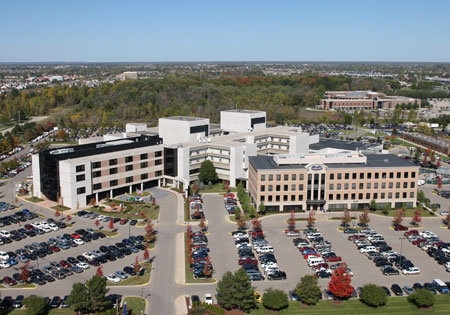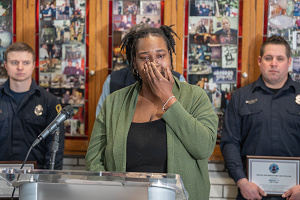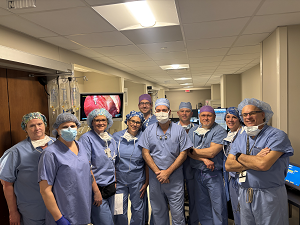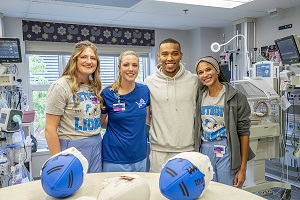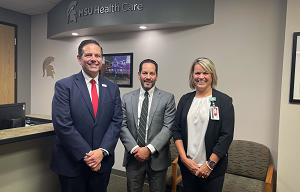No More Crying: Henry Ford Team Ends 20 Years of Tears

DETROIT – For nearly 20 consecutive years, a constant stream of tears flowed down Natalie Zoccola’s cheek. It had nothing to do with sadness, nor exceptional happiness; In fact, the tears streamed only down her left side. That’s because Natalie was born with a nasolacrimal duct obstruction, meaning tears were not able to drain through her tear duct in a normal fashion.
Tears are produced by the lacrimal gland, which is located in the eye socket. With the job of keeping our eyes moist and healthy, tears flow across the surface of the eye and drain through tiny holes on the inside of the upper and lower the eyelids near the nose. These tiny holes lead to the nasolacrimal duct, which empties into the nose. When that duct is obstructed, tears back up onto the eye, which can cause several problems, including frequent eye infections.
Natalie was born with this condition and lived with it until she was 5 years old, at which time her doctor did a dilation procedure to open the duct. This worked until she was 28, but then the duct closed again causing the tears and frequent eye infections to return. She chose to undergo surgery, but scar tissue developed around a stent that was inserted and the stent had to be removed. For nearly 20 years afterward, she lived with the obstructed duct.
“I had to carry tissues in my pocket every day, and the tears flowing constantly meant that I also couldn’t wear makeup,” Natalie said. “The worst part was the eye infections.”
A traffic technician by trade, Natalie bounces back and forth between an office setting and being out in the field for work. The constant eye watering was distracting and made her job more difficult. One day, enough was enough, and she made the decision to request an appointment with a Henry Ford Health System ophthalmologist.
Natalie was referred to Oculofacial Plastic and Reconstructive Surgeon, Swapna Vemuri, M.D. for evaluation. In June of 2018, she underwent a revision surgery to bypass her scarred duct, termed a dacryocystorhinostomy (DCR). A multi-disciplinary surgical approach was performed by Dr. Vemuri and John Craig, M.D., Henry Ford Health System’s division chief of rhinology and endoscopic skull base surgery. The two surgeons worked together to identify and perform the most optimal surgery for Natalie.
“When patients wish to avoid a facial scar near their eyelids, a transnasal endoscopic approach is an excellent alternative to the classically described external approach with equivalent success rates. This was the surgical approach that appealed most to Natalie,” Dr. Craig said. “The surgery was a complete success. Her tears now drain directly into her nose, not onto her cheek, and no longer will she get eye infections.”

In the time since her surgery, Natalie has enjoyed a life free of eye infections and constant tears. She has always been passionate about the outdoors, and has gotten back to her hobbies of hunting, fishing and taking her dog, Ranger, outside. Since her successful outcome, she no longer needs to carry tissues in her pocket. She doesn’t miss them, but Ranger is another story.
“Ranger loves tissues, and he would always stick his nose in my pocket and pull them out,” Natalie said. “He might be a little disappointed that they’re gone, but I’m not. The results from the surgery have been fantastic.”
To request an appointment with a Henry Ford Ophthalmologist, visit henryford.com/eye or call (800) 436-7936.
###
MEDIA CONTACT: Jeff Adkins / 586-307-2027 / jadkins6@hfhs.org
.svg?iar=0&hash=F6049510E33E4E6D8196C26CCC0A64A4)

/hfh-logo-main--white.svg?iar=0&hash=ED491CBFADFB7670FAE94559C98D7798)
